Don't wanna be here? Send us removal request.
Text
Why Every Backyard Needs a Pool Splash Pad: The Ultimate Guide to Family Fun and Safety

When summer heat kicks in, there’s nothing better than enjoying some cool water fun right in your backyard. While swimming pools have long been a favourite, there's a new trend that’s quickly making waves in family homes and public areas alike — the pool splash pad. It’s safe, fun, low-maintenance, and perfect for all ages.
In this comprehensive guide, we’ll walk you through what a pool splash pad is, why it’s a fantastic addition to any property, the common challenges you may face, a step-by-step installation guide, and how it compares to traditional water play options. Whether you're a homeowner, a parent, or even a childcare centre manager, this post will give you everything you need to know.
What Is a Pool Splash Pad?
A pool splash pad, also known as a splash zone or spray park, is a recreational area designed with water features like jets, sprinklers, and fountains that spray water upward or downward onto a flat surface. Unlike traditional pools, splash pads don’t collect standing water, making them safer and more accessible.
They can be standalone or connected to an existing swimming pool — adding an interactive and playful dimension to your water feature. Best of all, they’re typically slip-resistant and perfect for kids, toddlers, and even pets!
Top Reasons to Add a Pool Splash Pad to Your Home
Here are some major reasons why families and communities are turning to splash pads:
1. Safety First
Unlike pools, a pool splash pad doesn’t have deep water, eliminating the risk of drowning. This makes it ideal for families with young children or elderly relatives.
2. Low Maintenance
Pool splash pads use less water, require fewer chemicals, and are much easier to clean and maintain than traditional pools.
3. Budget-Friendly Fun
Installing a full-sized pool can cost tens of thousands of dollars. A pool splash pad, on the other hand, is a more affordable option that still brings endless summer joy.
4. Accessibility for All
Splash pads are more inclusive — they’re wheelchair-friendly, easy to access, and enjoyable even for people who don’t swim.
5. Customisable and Fun
From rainbow tunnels and spinning water wheels to dancing fountains, a pool splash pad can be fully customised to match your design goals and space.
Common Challenges With Pool Splash Pads
Despite their many benefits, there are a few common challenges that homeowners and property managers should consider:
1. Water Usage Concerns
While splash pads use less water than pools, they still consume water — especially if you don’t use a recirculation system.
2. Initial Installation Costs
Though more affordable than a pool, a custom splash pad can still carry a significant initial cost, particularly for plumbing and installation.
3. Weather Dependency
Splash pads are great in warm climates, but if you live somewhere with long winters or rainy seasons, you might not get year-round use.
4. Space Requirements
Not all backyards have the space required for a splash pad and its safety buffer. It’s important to plan carefully to avoid overcrowding or hazards.
5. Maintenance of Components
The nozzles, jets, and filters must be checked regularly to ensure everything works properly and hygienically.
Popular Pool Splash Pad Features and Design Ideas
If you’re thinking of installing a pool splash pad, here are some creative features you might want to include:
- Water Cannons
Fun for kids to aim and spray each other.
- Dump Buckets
Overhead buckets that fill and dump water, adding excitement and unpredictability.
- Spray Tunnels
Perfect for running through or crawling under. They look great with colourful arches.
- Interactive Ground Sprays
Jets that spray in patterns or respond to pressure when stepped on.
- LED Lighting
Add lights to your splash pad for night-time play and an impressive backyard feature.
- Soft Rubber Flooring
Prevents slipping and adds comfort underfoot. Available in different colours and textures.
Step-by-Step Guide: How to Build a Pool Splash Pad at Home
Here’s a simplified, step-by-step overview to help you understand the process of building a splash pad.
Step 1: Plan the Layout
Measure your available space.
Decide on features (jets, cannons, lighting, etc.).
Check council or zoning requirements for water play structures.
Step 2: Choose Recirculating or Drain-to-Waste
Recirculating systems recycle water and use a filtration system.
Drain-to-waste systems direct used water to your garden or a drainage point.
Recirculating systems are eco-friendlier but more complex and costly upfront.
Step 3: Prepare the Ground
Excavate the area.
Install drainage systems.
Lay the concrete base or surface for your splash pad.
Step 4: Install Plumbing and Electrical
This step involves installing pipes for the water jets and a power source for lighting or interactive controls.
Always use a licensed plumber and electrician.
Step 5: Set Up the Features
Mount your water jets, spray tunnels, dump buckets, and other fun elements.
Ensure everything is securely fastened and aligned.
Step 6: Test the System
Run water through the system to test for leaks, pressure, and proper drainage.
Check safety surfaces for any tripping or slipping hazards.
Step 7: Final Touches
Add colour, lighting, or themed decorations.
Set rules or signage for safe play.
Real-Life Case Study: The Smith Family's Backyard Splash Pad
Location: Brisbane, Australia Problem: The Smith family wanted a safe outdoor water feature for their three kids under 6, without the dangers of a traditional pool. Solution: They installed a compact 4m x 4m pool splash pad with five ground-level jets, a spinning water flower, and a rainbow tunnel.
Results:
Installation took 2 weeks.
The children use the splash pad nearly every day in summer.
Their water bill was slightly higher, but they saved money compared to a full pool installation.
The splash pad also became a hit during neighbourhood parties and birthdays.
Maintenance Tips for Your Pool Splash Pad
To keep your splash pad running smoothly, follow these basic maintenance guidelines:
1. Clean Filters Weekly
Check and clean filters to keep the water fresh and flowing properly.
2. Inspect Jets for Clogs
Leaves, dirt, or insects can block nozzles. Rinse them out as needed.
3. Sanitize the Water
If using a recirculating system, treat the water like a mini pool — with chlorine or UV sanitisation.
4. Check Flooring
Look for signs of wear, cracks, or lifted edges. Repair immediately to avoid injuries.
5. Winterise If Necessary
If you're in a colder climate, drain the system and cover the splash pad during the off-season.
Pool Splash Pad vs Swimming Pool: Which One Is Right for You?
Feature
Pool Splash Pad
Traditional Swimming Pool
Water Depth
None (safe for toddlers)
Deep (requires supervision)
Cost
Lower
Higher
Maintenance
Easier
More complex
Fun Factor
High for kids
High for swimmers
Year-round usability
Limited (weather-dependent)
Heated pools offer more flexibility
Safety
Excellent
Requires constant monitoring
If you want an option that combines fun and safety with minimal maintenance, a pool splash pad is the clear winner, especially for families with young children.
Creative Uses for a Pool Splash Pad
Beyond just backyard fun, splash pads are popping up in:
Childcare Centres – Offering a safe water play alternative.
Retirement Villages – Providing a refreshing and gentle way for seniors to cool down.
Public Parks – Encouraging community gathering and outdoor activity.
Hotels and Resorts – Adding a playful feature that attracts families.
Even dog parks are installing splash pads to help pets cool down in hot weather!
Conclusion: Dive Into the Splash Pad Lifestyle
A pool splash pad is more than just a trendy backyard addition — it’s a lifestyle upgrade. It delivers a safe, fun, and low-maintenance water play experience that the entire family can enjoy. Whether you're looking to cool down, entertain guests, or keep the kids active outdoors, installing a splash pad is a smart and satisfying investment.
From the planning stage to post-installation maintenance, we hope this guide has made the process clearer and more approachable. So grab your towel, turn on the jets, and get ready to splash your way into unforgettable memories.
Interested in installing a pool splash pad at your home or business? Contact us today for custom splash pad solutions tailored to your space and needs.
0 notes
Text
Smart Solutions on Building Pool on a Sloping Block
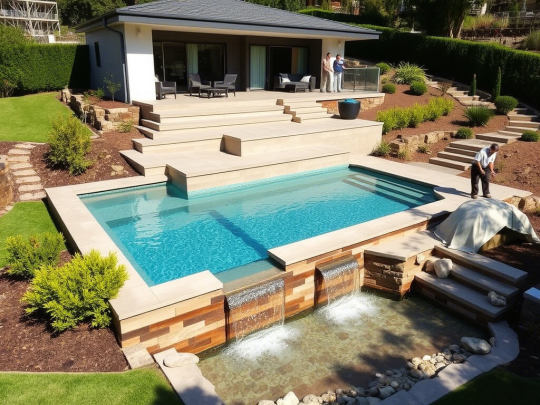
Dreaming of a backyard oasis but worried about your sloping property? At Aqua Living Pools, we've mastered the art of transforming challenging slopes into stunning aquatic retreats, having built over 300 pools on sloping blocks across the Gold Coast, Brisbane and Northern NSW.
This guide reveals how modern engineering and creative design can turn your sloping block from a challenge into your pool's best feature.
Why Sloping Blocks Make Exceptional Pool Sites
Contrary to popular belief, sloping properties offer unique advantages:
Natural infinity edge potential with panoramic views
Built-in privacy from elevation changes
Dramatic water features using the slope's gradient
Creative multi-level entertaining spaces
Recent data from the Australian Bureau of Statistics shows:
38% of residential blocks in coastal NSW/QLD have significant slopes
Sloping block pools have increased 72% in popularity since 2018
Homes with engineered slope pools see 15-25% higher property values
"Sloping blocks let us create pools you couldn't achieve on flat land," says Mark Wilson, Aqua Living Pools' Senior Designer. "They become true architectural features."
Aqua Living's Proven Approach to Sloping Block Pools
1. Site Assessment & Engineering
Detailed land surveys
Soil testing and geotechnical reports
Hydraulic calculations
Retaining wall requirements
2. Design Solutions
Slope Angle
Recommended Solution
Key Benefit
0-15°
Cut-and-fill
Cost-effective
15-25°
Retaining walls
Maximizes space
25°+
Cantilevered design
Stunning views
3. Construction Process
Laser-leveled foundations
Reinforced concrete structures
Integrated drainage systems
Customized coping solutions
See our sloping block pool portfolio for inspiring examples.
5 Brilliant Design Ideas for Sloping Blocks
1. Infinity Edge Illusions
Vanishing overflow edges
Glass panel boundaries
Reflective water surfaces
2. Multi-Level Entertaining
Pool on one level, spa on another
Integrated sunken fire pits
Staircase beach entries
3. Natural Rock Features
Waterfalls using elevation
Boulder-lined plunge pools
Stone retaining as design features
4. Under-Deck Pools
Utilizing space under elevated homes
Creative lighting solutions
Weather-protected swimming
5. Lap Pools Along Contours
Following the land's natural fall
Glass fence panoramas
Exercise-focused designs
Blue Haven Pools confirms these designs add 30% more visual impact than flat-block pools.
Cost Considerations for Sloping Block Pools
Budget Factors
Degree of slope (5-25% price variation)
Retaining requirements
Access challenges
Soil conditions
Typical Price Ranges
Solution
Average Cost
Timeline
Basic Retaining
$45,000-$65,000
8-10 weeks
Tiered Design
$65,000-$95,000
10-14 weeks
Cantilevered
$95,000-$150,000+
14-20 weeks
"Investing in proper engineering saves money long-term," notes Wilson. "We've fixed many budget pools that failed on slopes."
Engineering Essentials for Slope Stability
Must-Have Structural Elements
Helical piers for unstable soils
Grade beams around perimeter
Contoured footings
Surface water diversion
Drainage Systems
French drains behind walls
Slot drains in decking
Subsoil aggregation layers
Overflow management
Plungie Pools recommends spending 15-20% of budget on proper drainage.
Case Study: Gold Coast Cliffside Transformation
Challenge:
35° oceanfront slope
Limited machinery access
Salt spray exposure
Our Solution:
Cantilevered concrete shell
Corrosion-resistant rebar
Infinity edge with glass balustrade
Result:
Award-winning design
Zero erosion in 5 years
120° ocean views from pool
Council Regulations for Sloping Blocks
Key Considerations
Cut/fill limits (typically 1m)
Retaining wall heights
Boundary setbacks
Stormwater management
Approval Tips
Engage surveyors early
Consider "exempt development" options
Prepare engineering certifications
Allow 8-12 weeks for approvals
Maintenance Advantages of Slope Pools
Natural debris runoff - Less manual cleaning
Better circulation - Gravity assists flow
Easier equipment access - Often at top level
Simpler drainage - Water naturally moves away
Common Mistakes to Avoid
1. Underestimating Retaining Needs
Walls require proper footings
2. Poor Drainage Planning
Leads to erosion and wall failure
3. Choosing Wrong Materials
Some tiles crack with ground movement
4. DIY Attempts
Slope pools require professional engineering
Why Choose Aqua Living Pools for Your Slope?
300+ Slope Pool Projects
In-House Engineering Team
Custom Design Solutions
5-Year Structural Warranty
Take the First Step Toward Your Slope Pool
Ready to transform your challenging block? Explore Aqua Living's sloping block pool solutions or book a complimentary site assessment.
0 notes
Text
Curved Pools: A Stylish Choice for Modern Homes
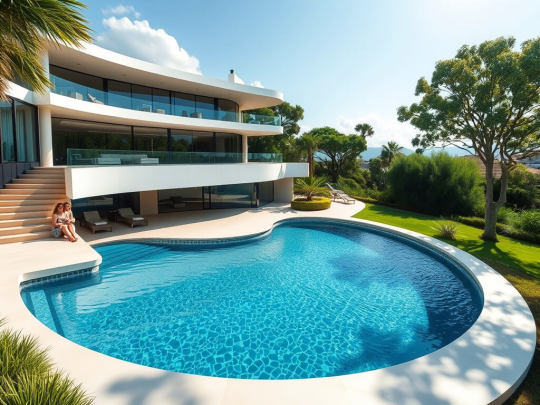
Swimming pools are no longer just a backyard luxury—they're a lifestyle statement. Among the wide variety of pool styles available, curved pools have emerged as a top choice for homeowners seeking a sleek, organic aesthetic that blends beautifully with their outdoor space. With fluid lines and elegant shapes, curved pools offer a softer, more natural look compared to traditional rectangular designs.
At Aqua Living Pools, we specialise in building high-quality concrete pools that elevate homes across the Gold Coast, Brisbane, and Northern NSW. Our team of expert pool builders takes pride in transforming properties into lavish, private retreats—custom-designed to reflect each client’s unique vision. For those looking to make a statement with their outdoor area, curved pools are the perfect blend of form and function.
Why Choose Curved Pools?
Curved pools stand out for their graceful lines, space efficiency, and design versatility. Here are just a few reasons why they are increasingly popular among Australian homeowners:
1. Natural Aesthetic Appeal
Unlike traditional square or rectangular pools, curved pools mimic the natural flow of water and the contours of the landscape. Their organic shapes can complement tropical gardens, modern architecture, or coastal-style homes, making them visually striking and harmonious with nature.
2. Flexible Design Options
Curved pools are not limited by rigid geometric lines. This allows for more creative freedom in design—perfect for integrating features such as spa zones, shallow lounging areas, or built-in benches. At Aqua Living Pools, our designers can tailor each curve to suit your space and vision.
3. Space-Saving Benefits
In smaller or irregularly shaped yards, curved pools can offer a better fit. Their flexible forms can wrap around landscaping, accommodate existing structures, or fit into tight corners—maximising usable space without compromising on elegance.
4. Family-Friendly Layout
Curved edges are often perceived as safer and more approachable, especially for families with young children. The gradual transitions and rounded corners create a more relaxed environment for both play and relaxation.
Curved Concrete Pools: Built to Last
At Aqua Living Pools, we specialise in concrete curved pools, giving homeowners the highest level of design flexibility and long-term durability. Unlike fibreglass pools, which are pre-moulded, concrete pools can be completely customised—allowing for intricate curves, varying depths, and luxury features like swim-up bars, waterfalls, and infinity edges.
Our process includes:
Personalised Design Consultation – We work closely with you to understand your lifestyle, budget, and backyard potential.
Precision Engineering – Every curve is carefully calculated to ensure structural integrity and seamless aesthetics.
Premium Finishes – Choose from luxurious interior finishes, coping stones, tiles, and lighting to elevate your pool’s visual appeal.
Full Project Management – From excavation to final landscaping, our team handles every step, ensuring a stress-free experience and exceptional results.
Why Aqua Living Pools?
As a leading pool builder in Gold Coast, Brisbane and Northern NSW, Aqua Living Pools brings craftsmanship, innovation, and passion to every project. Whether you're after a serene plunge pool or a large, resort-style entertainment zone, we have the skills and experience to make it happen.
Here’s what sets us apart:
✅ Bespoke Designs – No two pools are the same. We tailor every design to suit your preferences, home architecture, and outdoor living goals.
✅ Award-Winning Quality – Our concrete pools are built with attention to detail and industry best practices, ensuring long-lasting beauty and function.
✅ Customer-Centric Approach – From concept to completion, our team communicates clearly and works closely with you every step of the way.
✅ Lifestyle-Driven Results – We don’t just build pools—we create outdoor spaces that enhance your lifestyle and property value.
Ready to Dive into the Luxury of Curved Pools?
A curved pool can transform your backyard into a relaxing retreat, a stunning focal point, and a gathering space for years to come. If you're dreaming of a custom concrete pool that combines sophistication, practicality, and timeless appeal, Aqua Living Pools is here to bring that vision to life.
Get in touch with our expert team today to start designing your dream curved pool—because luxury living starts at home.
0 notes
Text
Dive Into Luxury: Must-Know Pool Features That Transform Your Backyard
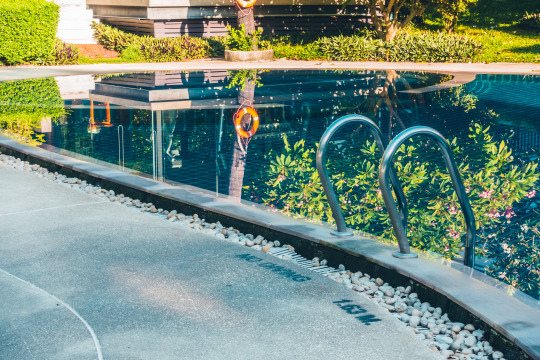
A backyard pool isn’t just a place to cool off—it’s a lifestyle. With the right pool features, your pool can become a resort-style retreat, an entertainment hub, or even a personal health spa. Whether you're designing a new pool or upgrading an existing one, understanding what features are available and how they enhance your space can make all the difference.
In this guide, we’ll explore everything you need to know about pool features, from the basics to high-end luxury touches. We'll also cover common challenges, walk you through a step-by-step process to designing the perfect pool, and share a real-life case study.
Unique Pool Feature Topics Everyone Should Know
1. Waterfalls and Cascades: Natural Serenity at Home
Waterfalls add more than beauty—they create a soothing ambiance and help circulate water. They can be built with natural stone or modern materials for a sleek finish.
2. Swim-Up Bars: Entertainment Without Leaving the Water
Popular in resorts, swim-up bars bring a touch of luxury and convenience. With stools built into the pool and a counter on the pool edge, guests can enjoy drinks and snacks without leaving the water.
3. Tanning Ledges: Soak Up the Sun Comfortably
Also called Baja shelves, tanning ledges are shallow platforms perfect for lounging, playing with children, or reading a book.
4. LED Lighting: A Nighttime Wonderland
LED pool lights in multiple colors can turn your pool into a nighttime oasis. Smart systems allow remote control and dynamic color changes.
5. Fire Features: Dramatic Contrasts
Fire bowls or fireplaces near the pool create a stunning visual contrast with the water, ideal for evening gatherings.
6. Infinity Edges: Visual Wow Factor
Ideal for pools with scenic views, infinity edges create the illusion of water blending into the horizon.
7. Built-In Seating and Tables
Built-in stools and tables are great for socializing. These features make it easier to enjoy a meal or drink while still relaxing in the pool.
8. Pool Automation: Smart Pools for Smart Living
From lighting and heating to chemical balancing, automation systems let you manage your pool from your smartphone.
9. Saltwater Systems: A Gentler Swim
Saltwater pools are easier on skin and eyes, and they often require less maintenance than traditional chlorine pools.
10. Integrated Spas: Relaxation Any Time
Combining a spa with your pool adds year-round usability. Integrated spas offer hydrotherapy benefits for stress relief and muscle recovery.
Common Challenges When Adding Pool Features
Budget Constraints Many pool features can quickly add up in cost. Knowing your budget and prioritizing essential features is crucial.
Space Limitations Not all backyards can accommodate large or multiple features. Careful planning is needed to make the most of limited space.
Maintenance Needs Each feature may require additional upkeep. Waterfalls, fire features, and automation systems all come with their own maintenance requirements.
Regulations and Permits Some features, especially those involving fire or electricity, require permits or inspections.
Matching Aesthetic and Functionality A cohesive look is important. Choosing features that complement your home and each other can be challenging without expert advice.
Climate Considerations In colder climates, some features might not be usable year-round unless properly insulated or protected.
Step-by-Step Guide: Planning Pool Features for Your Backyard
Step 1: Assess Your Lifestyle Needs
Do you host parties often?
Do you want relaxation or exercise?
Will kids use the pool frequently?
Step 2: Set a Budget
Determine your total budget and allocate funds to the most important features. Always include a buffer for unexpected costs.
Step 3: Evaluate Your Space
Work with a pool designer to map out what features can realistically fit in your yard.
Step 4: Choose Your Features
Select from essential pool features like lighting, spas, and ledges. Add luxury touches based on your budget and lifestyle.
Step 5: Design Integration
Ensure that all features work together aesthetically and functionally. Consider themes like modern, tropical, or natural.
Step 6: Get Necessary Permits
Check local regulations and obtain required permits for structural and utility changes.
Step 7: Hire Reputable Professionals
Choose experienced contractors familiar with the installation of specific features.
Step 8: Oversee Construction
Stay involved in the project to ensure everything is built according to plan and budget.
Step 9: Maintenance Planning
Set up a maintenance schedule and training on how to manage pool systems and features.
Step 10: Enjoy Your Pool
Once everything is complete, enjoy your upgraded outdoor space year-round.
Real-Life Case Study: The Watson Family's Dream Pool
Location: Brisbane, QLD Challenge: Limited space and a tight budget Goal: Create a pool area suitable for entertaining and relaxation
The Plan
The Watsons had a modest backyard and a mid-range budget. They wanted a pool with:
A tanning ledge
Built-in bench seating
LED lighting
A fire pit area nearby
The Process
They hired a local pool designer who helped them use the available space efficiently. To stay within budget, they chose a compact pool shape and focused on features that served multiple functions. For example, the tanning ledge also served as a safe play area for their toddler.
The Result
The new pool featured:
A shallow tanning ledge for relaxation and play
Multi-color LED lighting for evening ambiance
A built-in bench with jets for comfort
A fire pit adjacent to the pool for night-time gatherings
Outcome
The Watsons stayed within budget and now enjoy their pool year-round. Their home has become the favorite gathering spot for friends and family.
Conclusion: Elevate Your Backyard With the Right Pool Features
Pool features aren’t just about aesthetics—they can transform your lifestyle, improve property value, and turn your backyard into a personal oasis. Whether it’s a simple tanning ledge or a full suite of automation and fire features, there are options for every budget and space.
Remember, the key to a successful pool project is planning. Understand your goals, set a realistic budget, and work with experienced professionals. With thoughtful design and the right pool features, your backyard can become your favorite place to be.
0 notes
Text
Why Lap Pools in Brisbane Are a Smart Investment
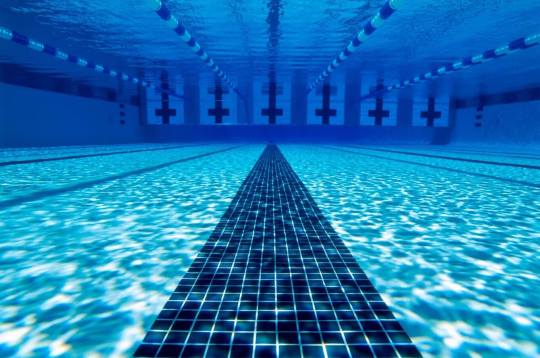
Living in Brisbane means enjoying a warm climate, sunny days, and an outdoor lifestyle all year round. For many homeowners and fitness enthusiasts, a swimming pool is not just a luxury—it's a necessity. Among the various types of pools available, lap pools in Brisbane are rapidly gaining popularity due to their practical design, health benefits, and aesthetic appeal.
Whether you’re considering installing a lap pool at home or managing a fitness facility, understanding the advantages of lap pools can help you make an informed decision that suits your lifestyle and property.
What Are Lap Pools?
Lap pools are long, narrow swimming pools primarily designed for fitness and exercise. Typically ranging from 10 to 25 metres in length, they are perfect for swimming laps without interruption. Unlike traditional backyard pools designed for recreation, lap pools are sleek, space-efficient, and ideal for regular swimming routines.
In Brisbane, where space can be limited in suburban properties, lap pools provide a functional and visually appealing solution for staying active and cool.
Benefits of Installing Lap Pools in Brisbane
1. Perfect for Fitness and Rehabilitation
Swimming is one of the best low-impact exercises that benefits cardiovascular health, strengthens muscles, and supports weight loss. Lap pools in Brisbane are ideal for individuals who want to integrate swimming into their daily fitness regime. They’re also beneficial for people recovering from injury, as swimming places minimal stress on joints.
2. Year-Round Swimming
Thanks to Brisbane’s subtropical climate, you can use a lap pool almost all year round. With the addition of a pool heater, even the cooler months won't stop you from sticking to your fitness goals. Brisbane homeowners find that investing in a heated lap pool delivers maximum utility for their money.
3. Space-Saving Design
Many properties in Brisbane don’t have the land size to accommodate large resort-style pools. Lap pools, with their long and narrow design, fit seamlessly along the side of a house, in courtyards, or even as a rooftop feature. Their modern appearance also enhances the overall appeal of your home.
4. Boost in Property Value
Lap pools add a premium touch to your property. With more Brisbane buyers seeking homes that support an active lifestyle, a well-designed lap pool can make your property more attractive on the market. It’s a feature that blends luxury with functionality, giving you a competitive edge in real estate.
5. Low Maintenance
Because lap pools typically have a smaller surface area than traditional pools, they require less maintenance, fewer chemicals, and lower operating costs. This makes them a smart choice for homeowners who want the benefits of a pool without the high upkeep.
Choosing the Right Lap Pool Builder in Brisbane
When it comes to lap pools in Brisbane, choosing a reputable pool builder is crucial. Look for professionals who:
Have experience in custom lap pool design and installation.
Understand Brisbane’s council regulations and building codes.
Offer options for energy-efficient heating and filtration systems.
Provide warranties and aftercare service.
Some builders also offer additional features like swim jets, automatic covers, and lighting systems that enhance your swimming experience.
Popular Lap Pool Features for Brisbane Homes
To make the most of your lap pool investment, consider incorporating these features:
Swim Jets: Allow you to swim against a current, perfect for high-intensity training in compact pools.
Underwater Lighting: Enhances nighttime swimming and adds a luxurious touch.
Glass Pool Fencing: Offers unobstructed views and a sleek, modern aesthetic.
Tiling and Coping Options: From natural stone to ceramic, choose finishes that complement your home’s architecture.
Lap Pools for Commercial Use in Brisbane
It’s not just homeowners who benefit from lap pools. Gyms, hotels, and wellness centres in Brisbane are increasingly incorporating lap pools to attract health-conscious clients. These facilities gain a competitive edge by offering aquatic fitness services, water aerobics, and swim training sessions.
Conclusion
Lap pools in Brisbane offer the perfect blend of practicality, luxury, and health benefits. Whether you're looking to enhance your personal fitness, add value to your property, or create a stunning backyard feature, a lap pool is a versatile and smart choice. With Brisbane’s warm weather and outdoor culture, there’s never been a better time to dive into the benefits of a lap pool.
0 notes
Text
Guide to Choosing the Right Infinity Pool Builders
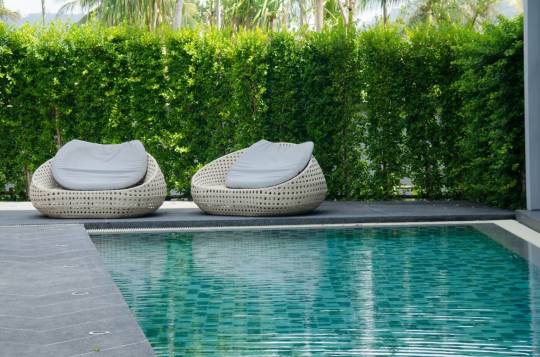
Dreaming of turning your outdoor space into a resort-style retreat? If you’re considering a high-end addition to your home, an infinity pool is one of the most stunning and luxurious features you can choose. But when it comes to creating a pool that blends aesthetics with structural excellence, partnering with the right infinity pool builders is critical.
In this blog, we’ll explore what sets an infinity pool apart, why hiring experienced infinity pool builders matters, and how to choose the best team to bring your dream to life.
What Is an Infinity Pool?
Also known as a vanishing edge or negative edge pool, an infinity pool is designed to give the illusion that the water extends to the horizon. This breathtaking effect is achieved by having one or more walls of the pool built at water level, allowing water to spill over into a catch basin and recirculate.
Infinity pools are especially popular in properties with scenic views—be it coastal, mountainous, or city skyline. Their seamless design creates a luxurious visual that adds value to any home.
Why You Need Experienced Infinity Pool Builders
Constructing an infinity pool isn’t the same as building a standard pool. The precision involved in achieving the “infinite” look, combined with complex hydraulic and structural requirements, means you need expert infinity pool builders who specialise in this type of design.
Here’s why experience matters:
1. Engineering and Design Expertise
Infinity pools require detailed planning and engineering to ensure structural integrity, especially on sloped terrain or elevated locations. Reputable builders understand water flow, load-bearing specifications, and how to incorporate design with drainage systems.
2. Water Management Systems
A crucial aspect of an infinity pool is the water catch basin, which collects overflow and recirculates it back into the main pool. Builders must accurately calculate water volumes, overflow rates, and pump strength to ensure a flawless user experience.
3. Aesthetic Precision
The magic of an infinity pool lies in its visual appeal. A true infinity edge needs to be perfectly level to achieve the illusion. Only skilled builders can guarantee this kind of precision and craftsmanship.
Key Features to Look for in Infinity Pool Builders
If you want a pool that not only looks amazing but also stands the test of time, keep these factors in mind when choosing your infinity pool builders:
✔ Proven Portfolio
Always ask to see past projects. A seasoned builder will have a portfolio showcasing a range of successful installations, ideally in different settings and elevations.
✔ Custom Design Capabilities
No two backyards are the same. Great infinity pool builders will offer customised designs tailored to your landscape, architecture, and lifestyle.
✔ Licensing and Insurance
Make sure the builder is licensed, insured, and up to date with local regulations. This ensures accountability and peace of mind during the build.
✔ Positive Reviews and Referrals
Look for customer reviews, testimonials, or even ask for referrals. Happy clients are a strong indicator of consistent quality and professionalism.
✔ End-to-End Services
The best builders provide full-service solutions—from design and permits to excavation, construction, and final landscaping.
Benefits of Installing an Infinity Pool
Partnering with skilled infinity pool builders ensures you enjoy a host of long-term benefits:
Increased Property Value: Luxury additions like infinity pools can significantly boost your home’s market value.
Resort-Style Living: An infinity pool offers a peaceful, spa-like atmosphere right at home.
Perfect for Entertaining: Whether it’s a sunset party or a lazy Sunday, infinity pools make for a stunning entertaining space.
Customisable Features: Add LED lighting, waterfalls, swim-up bars, and more for a fully bespoke experience.
Cost Considerations
Infinity pools are a premium investment. The cost varies depending on:
Size and shape of the pool
Terrain and slope of the installation site
Materials used (glass tiles, stone, concrete, etc.)
Additional features like heating, lighting, and automation
An experienced builder will offer transparent pricing and a detailed breakdown of costs before the project begins.
Conclusion
If you're looking to elevate your outdoor space and invest in a statement piece that combines elegance with functionality, hiring the right infinity pool builders is the first and most important step. The right team will turn your vision into reality, ensuring every technical detail and aesthetic touch is masterfully handled.
Don’t settle for average. Choose a builder who understands the complexity and artistry of infinity pool construction—and get ready to enjoy the ultimate in backyard luxury.
0 notes
Text
L Shaped Pools: Smart Choice for Modern Backyards
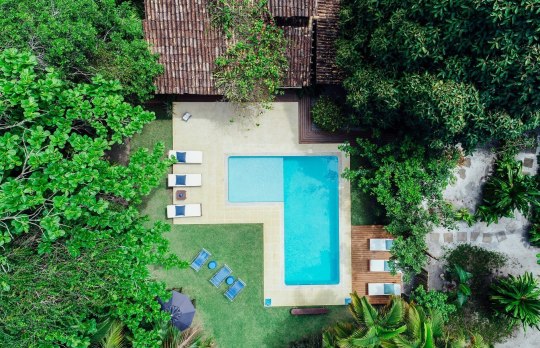
When it comes to pool design, homeowners today are looking for more than just a place to cool off. They want functionality, style, and a shape that fits seamlessly into their outdoor space. That’s where L shaped pools come into play. These uniquely structured pools are growing in popularity across Australia and beyond thanks to their versatility, aesthetic appeal, and practical advantages.
Whether you’re upgrading your backyard or building a brand-new pool area, an L shaped pool might be the ideal solution. In this blog, we explore what makes L shaped pools so desirable, their benefits, design considerations, and why they’re a top pick for families, entertainers, and fitness enthusiasts alike.
What Is an L Shaped Pool?
As the name suggests, an L shaped pool features a layout resembling the letter “L.” It typically consists of two rectangular sections—one long leg and one short leg—intersecting at a right angle. This structure provides natural zones for different pool activities, making it a multi-functional choice for homeowners.
One leg may be used for lap swimming or exercise, while the shorter section can serve as a shallow area for children, lounging, or spa features. This makes L shaped pools a perfect blend of leisure and fitness.
Key Benefits of L Shaped Pools
1. Zoned Functionality
One of the biggest advantages of L shaped pools is their ability to naturally divide space. You can have a shallow relaxation area separate from a deeper swimming zone, which is especially helpful for families with kids or multi-generational households.
2. Ideal for Narrow or Irregular Blocks
If your backyard isn’t a perfect rectangle, an L shaped design might fit better than a traditional square or oval pool. It can be customised to wrap around corners or existing structures like patios, gardens, or alfresco areas—making the most of your available space.
3. Modern Aesthetic Appeal
L shaped pools have a sleek, geometric appearance that complements modern architecture and landscaping. Their clean lines and structured shape add a designer touch to any outdoor setting.
4. More Privacy
The right-angled layout can help create visual separation from neighbouring properties or the street. With strategic landscaping, you can create private zones for relaxing or entertaining, giving you a resort-like feel at home.
5. Versatile Design Options
From adding spa jets in one leg to installing steps, ledges, or fountains, L shaped pools are incredibly customisable. They offer plenty of room for built-in features without sacrificing swim space.
Design Considerations for L Shaped Pools
1. Space and Orientation
Before installing an L shaped pool, consider the dimensions and orientation of your yard. An experienced pool designer can help you position the pool to capture the best sunlight, ensure safety, and create a harmonious flow with your landscape.
2. Purpose of Use
Think about how your household will use the pool. Do you need a dedicated lap swimming section? A child-safe play area? Perhaps a built-in bench or spa? L shaped pools allow for tailored designs to suit your lifestyle.
3. Materials and Finish
Like other pool types, L shaped pools can be built with fibreglass, concrete, or vinyl. Concrete offers the most flexibility in shape and finish, while fibreglass provides quick installation with a variety of pre-moulded designs.
4. Surrounding Landscape
Maximise the aesthetic impact of your L shaped pool with the right landscaping. Think about decking, greenery, lighting, and shade structures that enhance functionality and visual appeal.
Are L Shaped Pools Right for You?
If you’re looking for a pool that balances function with form, an L shaped pool is worth considering. It’s ideal for:
Families with kids who need both shallow and deep areas
Fitness-minded individuals who want a lap section
Homeowners with irregular or tight backyards
People who love entertaining outdoors
Plus, the angular design lends itself beautifully to modern architecture and minimalist aesthetics, making it a timeless investment for your home.
Conclusion: Dive into a Smarter Pool Design
L shaped pools offer a unique combination of versatility, beauty, and practicality. From their functional layout to their contemporary appeal, they’re a smart choice for homeowners who want more from their backyard oasis.
Whether you're building a new home, renovating your outdoor space, or replacing an older pool, an L shaped pool can elevate the entire feel of your property. Ready to take the plunge? Speak with a professional pool designer to see how an L shaped pool can be customised for your home, your family, and your lifestyle.
0 notes
Text
The Ultimate Guide to Lap Pool Builders: Everything You Need to Know Before You Dive In
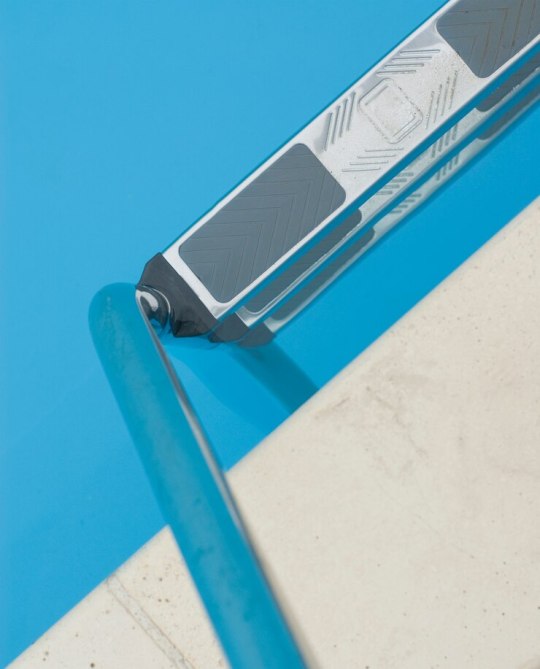
Are you dreaming of a sleek, elegant lap pool in your backyard? Whether it's for fitness, relaxation, or enhancing your property's value, a lap pool can be a game-changer. In this blog, we’ll walk you through everything you need to know about lap pool builders, what to expect, the benefits, common challenges, a step-by-step building guide, a real-life case study, and a conclusion to help you decide.
Why Choose a Lap Pool?
Lap pools are long, narrow, and designed for swimming laps. They are especially popular among fitness enthusiasts and homeowners with limited backyard space. Some common reasons to choose a lap pool include:
Exercise: Ideal for daily workouts without leaving home.
Space-saving: Fits in narrow yards where traditional pools can’t.
Aesthetic appeal: Modern and minimalist designs add value to your property.
Low maintenance: Typically uses fewer chemicals and energy.
Unique Topic: The Secret Language of Lap Pool Builders
Not all lap pool builders are created equal. Experienced builders speak a specific “language” that combines technical expertise, creative design, and client-focused communication. When choosing a builder, listen for these key signals:
Custom approach: Do they offer designs tailored to your space and needs?
Material knowledge: Are they transparent about costs and durability?
Regulatory awareness: Do they understand local building codes and safety regulations?
Efficiency talk: Do they plan around weather, permits, and timelines?
This language separates premium lap pool builders from general contractors.
Common Challenges When Building a Lap Pool
Building a lap pool isn’t always smooth sailing. Here are some of the most common obstacles and how to handle them:
1. Limited Space
Many homeowners think their yard is too small for a pool. However, lap pools are designed to fit into narrow or awkward spaces.
Tip: Work with lap pool builders who specialize in compact designs.
2. Budget Constraints
Custom pools can get expensive quickly if not properly managed.
Tip: Request a detailed quote and clarify what’s included (materials, landscaping, permits, etc.).
3. Regulations and Permits
Zoning laws, setback rules, and safety regulations vary by location.
Tip: Choose builders familiar with your local council's requirements.
4. Soil and Ground Conditions
Unstable ground, clay soils, or underground pipes can affect construction.
Tip: Have a soil test done before breaking ground.
5. Time Delays
Bad weather or material shortages can delay your project.
Tip: Plan for potential delays in your timeline.
Step-by-Step Guide to Hiring Lap Pool Builders
Building a lap pool is a big investment. Follow this simple guide to ensure a smooth process.
Step 1: Define Your Needs
How will you use the pool—fitness, recreation, aesthetics?
What’s your budget?
Do you have special requirements (heated pool, saltwater, etc.)?
Step 2: Site Evaluation
Invite a few lap pool builders to evaluate your space.
Ask about potential challenges.
Step 3: Design Consultation
Discuss pool dimensions, finishes, features (jets, lighting, etc.).
Consider surrounding landscaping and decking.
Step 4: Permits and Approvals
Your builder should handle this step.
Ensure compliance with fencing, drainage, and safety laws.
Step 5: Construction
Excavation
Steel framework
Plumbing and electrical
Concrete shell or fiberglass installation
Tiling and finishes
Step 6: Final Touches
Landscaping
Lighting
Water testing
Step 7: Handover and Maintenance Training
Understand how to clean, test chemicals, and operate pumps.
Schedule routine maintenance.
Case Study: Turning a Narrow Backyard Into a Lap Pool Paradise
Client: The Peterson Family – Brisbane, QLD
Challenge: The family wanted a private lap pool in a 3-meter-wide backyard.
Solution:
Initial Consult: The family contacted three lap pool builders. One stood out for their creative approach and excellent communication.
Design Phase: A 12-meter x 2.5-meter concrete lap pool was proposed. The design included glass fencing and a timber deck.
Permit Work: The builder took care of all Brisbane City Council permits.
Construction: Despite some heavy rain, the project stayed close to the 8-week timeline.
Results: The finished pool is both a fitness feature and a backyard centerpiece. Maintenance has been simple with the included saltwater system.
Client Testimonial:
“Our lap pool turned out better than we imagined. We use it daily, and it’s added so much value to our home. We’re grateful to our builder for making it stress-free.”
Benefits of Working With Professional Lap Pool Builders
Expertise: They understand pool dynamics, drainage, and waterproofing.
Efficiency: They stick to timelines and budgets.
Warranty: Professional builders usually offer workmanship guarantees.
Design Creativity: They can suggest features you hadn’t considered.
How Much Does It Cost to Build a Lap Pool?
The cost varies based on:
Size and depth
Materials (concrete vs fiberglass)
Features (lighting, heating, jets)
Location (access, permits)
Estimated Range: $35,000 to $80,000+
Maintenance Tips for Your Lap Pool
Skim leaves and debris daily.
Vacuum the pool weekly.
Check and balance chemicals.
Clean the filter regularly.
Inspect pumps and lights monthly.
Popular Features to Consider
Infinity edge: For sloped yards or a luxury feel
LED lighting: For night swimming
Solar heating: Eco-friendly and cost-effective
Swim jets: For endless swimming in a compact pool
Conclusion: Dive Into a Better Lifestyle
Choosing to build a lap pool is a commitment—but with the right lap pool builders, it’s a rewarding one. From fitness and functionality to beauty and relaxation, a lap pool offers year-round enjoyment and can dramatically increase your home’s value.
By understanding the process, challenges, and benefits, you’ll be better prepared to make informed decisions. Whether you're building from scratch or upgrading your backyard, the right builder can bring your vision to life.
Ready to take the plunge? Speak with experienced lap pool builders today and turn your dream into a daily reality.
0 notes
Text
The Ultimate Guide to Pool Heaters
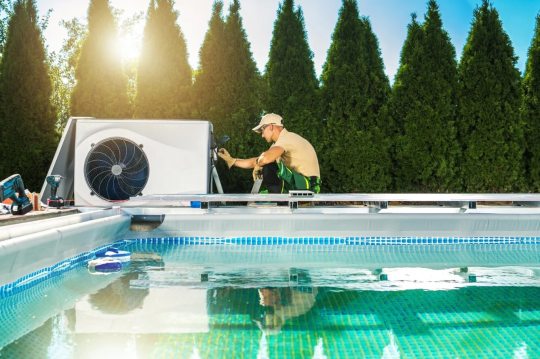
A swimming pool is a fantastic addition to any home, offering relaxation, recreation, and even a great workout. But to truly make the most of your pool all year round, investing in pool heaters is a smart move. Pool heaters extend your swimming season, boost comfort, and increase your property's value.
In this guide, we’ll explore everything you need to know about pool heaters—from how they work and the different types available to the key benefits and tips for choosing the right one for your pool.
What Are Pool Heaters?
Pool heaters are systems designed to warm the water in your swimming pool, allowing for comfortable swimming temperatures regardless of the weather. Whether you have an in ground, above-ground, or spa-style pool, a heater ensures that your water stays at a pleasant temperature throughout spring, autumn, and even winter in milder climates.
Types of Pool Heaters
Choosing the right pool heater depends on your climate, pool size, usage patterns, and energy preferences. Here are the most common types of pool heaters:
1. Gas Pool Heaters
Gas pool heaters use natural gas or propane to heat pool water. They’re known for their fast heating capabilities, making them ideal for pools that aren't used regularly but need to be heated quickly when in use.
Pros:
Heats water quickly
Works well in all climates
Effective for larger pools
Cons:
Higher operational costs
Less energy-efficient than other options
2. Electric Heat Pumps
Electric heat pump pool heaters extract heat from the air and transfer it to the pool water. They are energy-efficient and work best in moderate to warm climates.
Pros:
Low operating costs
Environmentally friendly
Long-lasting
Cons:
Higher upfront cost
Slower to heat water compared to gas heaters
3. Solar Pool Heaters
Solar pool heaters use solar panels to capture energy from the sun and heat your pool water. These systems are eco-friendly and cost-effective in the long run, though they require sunny conditions for optimal performance.
Pros:
Eco-friendly and sustainable
Low ongoing costs
Long lifespan
Cons:
Dependent on weather conditions
May require a large roof or space for panels
Benefits of Pool Heaters
Investing in pool heaters offers numerous advantages for homeowners and commercial pool operators alike:
1. Extended Swimming Season
Pool heaters allow you to enjoy your pool from early spring to late autumn—or even year-round in milder climates.
2. Increased Comfort
Nothing beats the luxury of diving into comfortably warm water, especially during early morning or evening swims.
3. Higher Property Value
A well-heated pool adds value to your home, appealing to prospective buyers who want year-round pool access.
4. Better Pool Utilisation
Whether you use your pool for exercise, therapy, or entertainment, a consistent water temperature ensures you get maximum usage from your investment.
Choosing the Right Pool Heater
When selecting pool heaters, consider the following factors:
Climate:If you live in a colder region, a gas heater may be more effective. In warmer climates, solar or electric heat pumps are more efficient.
Pool Size: Larger pools require more powerful heaters. Be sure to check the BTU rating of your heater to match your pool’s volume.
Usage Frequency: Frequent swimmers may benefit from a heat pump or solar heater, while occasional users may prefer the on-demand heating of gas systems.
Budget: Gas heaters have lower upfront costs but higher operating expenses, while solar heaters cost more initially but save money over time.
Environmental Impact: Solar heaters and electric heat pumps are eco-friendlier options compared to gas.
Installation and Maintenance
Professional installation is recommended for most pool heaters to ensure safety and efficiency. Once installed, regular maintenance—such as checking filters, inspecting connections, and cleaning solar panels—helps prolong the lifespan of your heater and ensures optimal performance.
Conclusion
Whether you’re looking to swim year-round or simply enjoy more pool time each season, pool heaters are a worthwhile investment. With several types to choose from—gas, electric, and solar—there’s a heating solution for every budget, climate, and lifestyle. By considering your pool’s size, location, and usage patterns, you can find the perfect heater to keep your water at the ideal temperature, all year long.
0 notes
Text
Choosing Pool Size: A Complete Guide for Your Backyard
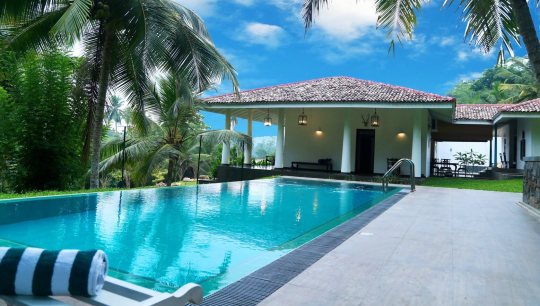
When it comes to building your dream swimming pool, choosing pool size is one of the most important decisions you'll make. The size of your pool affects everything—from how you use it and how much it costs, to how it fits within your backyard and lifestyle. Whether you're planning for weekend family swims, fitness laps, or entertaining guests, selecting the right pool size is crucial to maximising your investment and enjoyment.
Why Pool Size Matters
The right pool size ensures you strike the perfect balance between functionality, aesthetics, and affordability. A pool that’s too small might not meet your needs, while a pool that’s too large can overwhelm your yard and budget. Careful planning ensures your swimming pool enhances your outdoor space rather than dominating it.
Key Factors to Consider When Choosing Pool Size
1. Available Space in Your Backyard
Before diving into design ideas, measure the space available for the pool. Be sure to account for:
Setback requirements or local council regulations
Patio or lounging areas
Landscaping features
Pool fencing and safety zones
A compact yard may be better suited to a plunge pool or small lap pool, while a larger area allows for more creative freedom with shapes and sizes.
2. Intended Pool Use
How you plan to use the pool plays a major role in determining size. Consider these common pool uses:
Family fun: A medium-sized pool with a shallow end and plenty of space is ideal for kids to play safely.
Exercise and laps: A lap pool needs to be long and narrow—typically 10–15 metres in length—to allow for continuous swimming.
Entertaining guests: A larger pool with a wide entry and seating areas is perfect for social gatherings.
Relaxation: If your primary goal is to unwind, a small pool or spa pool may suffice.
3. Pool Shape and Depth
Size isn't just about length and width—depth matters too. A pool with a uniform depth is great for exercise and casual use, while a deep-end pool suits diving or games. Choosing the right pool shape and depth also impacts how much of your yard the pool occupies.
4. Budget
Pool size is a major cost factor. Larger pools require more materials, labour, and maintenance, not to mention higher water and energy costs. When choosing pool size, make sure you budget for:
Excavation and construction
Filtration and heating systems
Ongoing maintenance and cleaning
Landscaping and pool surrounds
Smaller pools can still provide luxury on a budget, especially when paired with features like water jets, lighting, or custom tiling.
5. Resale Value
If you're planning to sell your home in the future, consider what will appeal to buyers in your area. In family-friendly neighbourhoods, a well-sized pool can be a selling point. However, an overly large or oddly-shaped pool might deter buyers looking for more usable yard space.
Common Pool Sizes and Their Uses
Small pools (3m x 2m to 5m x 3m) Ideal for small yards, plunge pools, or spa-style relaxation.
Medium pools (6m x 3m to 8m x 4m) Great for families, casual swimming, and light exercise.
Large pools (10m x 4m and above) Best for serious swimmers, frequent entertainers, or expansive properties.
Tips for Making the Right Choice
Consult with a professional pool builder to assess your space and provide guidance tailored to your needs.
Visualise the pool size using string outlines or marking spray to understand how it will fit into your backyard.
Think long-term—choose a size that suits your current lifestyle and future needs as well.
Final Thoughts
Choosing pool size is not a one-size-fits-all decision. It requires careful consideration of your property, lifestyle, and budget. By understanding your goals and working with a trusted pool design expert, you can create a swimming pool that perfectly complements your home and enhances your outdoor living experience.
Whether you’re after a sleek lap pool, a family-friendly oasis, or a luxurious backyard retreat, taking the time to choose the right pool size will ensure you enjoy it for years to come.
0 notes
Text
The Ultimate Guide to Plunge Pool Builders: Everything You Need to Know
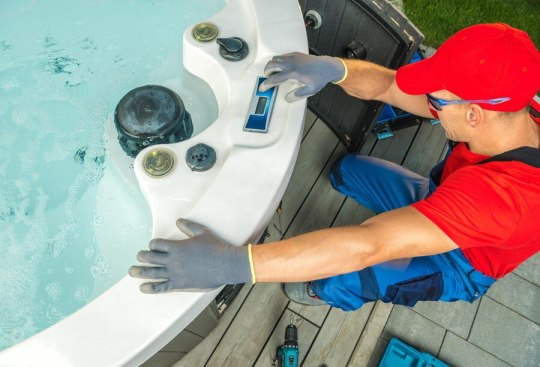
Introduction
Plunge pools are becoming an increasingly popular choice for homeowners who want a luxurious yet compact swimming solution. These small pools offer relaxation, style, and a cooling escape without taking up too much space. If you’re considering installing one, working with expert plunge pool builders is crucial to ensuring a seamless experience.
In this guide, we’ll cover everything you need to know about plunge pool builders, including common topics, challenges, a step-by-step guide, and a real-life case study. Whether you’re looking for inspiration or practical advice, this article will help you make an informed decision.
1. Why Plunge Pools Are the Perfect Choice for Modern Homes
Plunge pools are not just a luxury addition—they offer practical benefits as well. Here’s why many homeowners are opting for plunge pools:
Space-Saving Design – Unlike traditional swimming pools, plunge pools fit in small backyards or courtyards.
Energy Efficiency – These pools require less water and energy, making them a more sustainable option.
Low Maintenance – Due to their compact size, plunge pools need less cleaning and fewer chemicals.
Versatile Use – They can be used for hydrotherapy, relaxation, or even light exercise.
If any of these benefits appeal to you, working with professional plunge pool builders can bring your vision to life.
2. Challenges of Building a Plunge Pool
While plunge pools offer many advantages, there are some challenges to consider during the building process:
A. Finding the Right Builder
Not all pool contractors specialize in plunge pools. Hiring an experienced plunge pool builder ensures that the design, installation, and finishing meet your expectations.
B. Budget Considerations
Although plunge pools are smaller than traditional pools, they can still be expensive depending on materials, additional features, and installation costs.
C. Site Preparation
Limited backyard space or difficult soil conditions can complicate the construction process.
D. Council Approvals & Regulations
Each region has different regulations for pool installations, including safety barriers and plumbing requirements. Your plunge pool builders should handle all legal compliance aspects.
E. Customization & Add-ons
Adding features like heating, waterfalls, or seating areas can increase the cost and complexity of the project.
3. Step-by-Step Guide to Building a Plunge Pool
Step 1: Planning & Design
Before construction begins, you need a clear idea of what you want:
Choose a shape and size that fits your available space.
Decide on materials (fiberglass, concrete, or vinyl liner).
Consider additional features like jets, heating, or LED lighting.
Your plunge pool builders will help you create a design that meets your needs and budget.
Step 2: Site Assessment & Permits
Your builder will inspect your backyard to assess soil conditions, space, and access for construction equipment. They will also handle any necessary permits and approvals from local councils.
Step 3: Excavation & Foundation
Once permits are approved, the construction process begins with excavation. A sturdy foundation is essential to ensure the longevity of your plunge pool.
Step 4: Pool Shell Installation
Depending on your choice of material, your pool shell will either be delivered (fiberglass) or built on-site (concrete). Your builder will install plumbing and electrical components at this stage.
Step 5: Finishing Touches
After the pool structure is in place, finishing touches such as tiling, coping, and landscaping are completed. Additional features like water jets, lighting, and heating systems are installed.
Step 6: Water Filling & Testing
Once construction is finished, the pool is filled with water, and your builder will test all systems to ensure everything is functioning correctly.
Step 7: Enjoy Your New Plunge Pool!
With the project complete, you can now relax and enjoy your new backyard oasis!
4. Case Study: Transforming a Small Backyard into a Luxury Escape
Client: Sarah & Mark – Brisbane, Australia
The Challenge:
Sarah and Mark had a small backyard but wanted a water feature that would also provide a space for relaxation. They were unsure about how a pool would fit in their space and worried about the cost.
The Solution:
They consulted expert plunge pool builders who recommended a compact, rectangular fiberglass plunge pool with built-in seating and a heating system.
The Process:
The builders assessed the backyard and confirmed feasibility.
The couple chose a modern design with natural stone finishes.
Construction took just four weeks from start to finish.
Additional features like LED lighting and a waterfall were added to enhance aesthetics.
The Result:
Sarah and Mark now enjoy their backyard retreat year-round, with a stylish and low-maintenance plunge pool that adds value to their home.
Conclusion
Plunge pools are an excellent option for homeowners looking to maximize their outdoor space while enjoying the benefits of a swimming pool. However, selecting experienced plunge pool builders is crucial for a smooth and successful installation.
By understanding the challenges, following a clear step-by-step process, and working with the right professionals, you can create a stunning plunge pool tailored to your needs. Whether for relaxation, therapy, or aesthetic enhancement, a plunge pool can be a fantastic investment in your home and lifestyle.
Are you ready to build your dream plunge pool? Contact expert plunge pool builders today and take the first step towards your perfect backyard oasis!
0 notes
Text
Everything You Need to Know About Curve Pools: The Ultimate Guide
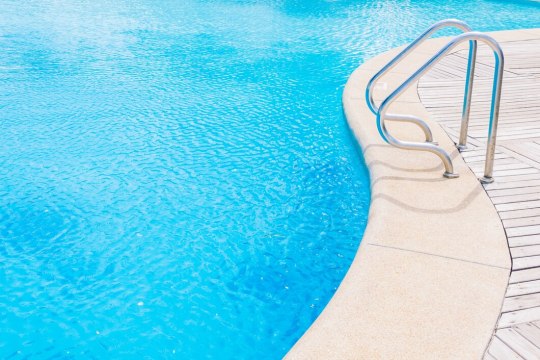
Curve pools are becoming increasingly popular for homeowners who want a unique and luxurious backyard. These visually stunning and functional swimming pools bring a sense of elegance and style while enhancing the overall design of a home. Whether you’re looking for a sleek modern look or a more natural feel, curve pools can be designed to match any aesthetic.
But what exactly is a curve pool, and why is it gaining so much popularity? In this blog post, we will dive deep into the world of curve pools, uncovering everything you need to know. From understanding their advantages and challenges to a step-by-step guide on how to design one, we've got it all covered.
Let’s get started!
What Are Curve Pools?
Curve pools are exactly what the name suggests – swimming pools with curved shapes instead of traditional straight-edged or rectangular forms. These pools are designed to flow seamlessly with their environment, offering an organic look that works particularly well in natural or modern landscaping.
These pools can vary in size, shape, and design, but they all share one key feature: a smooth, flowing curvature that enhances the beauty and aesthetics of any backyard. Unlike conventional pools, which often feel boxy and rigid, curve pools create a more relaxed and natural vibe that is both visually appealing and functional.
Curve pools are highly customizable, allowing homeowners to select everything from the pool's shape and depth to the materials used in its construction. The possibilities are endless, whether you prefer a gentle curve that mimics the organic flow of water or a more dramatic, sculptural design that becomes the centerpiece of your backyard.
The Popularity of Curve Pools
Curve pools have gained significant attention in recent years, thanks to their versatility and aesthetic appeal. Homeowners are now more focused on creating spaces that offer both relaxation and visual interest, which is why curve pools have become a go-to option for those designing their dream backyard.
Some of the most common reasons for the rise in popularity of curve pools include:
Unique Aesthetics: The organic and flowing shape of curve pools offers a refreshing change from the standard rectangular pools.
Design Flexibility: Curve pools can be customized to suit various landscape styles, from contemporary to tropical or Mediterranean.
Natural Integration: Their soft lines allow curve pools to blend seamlessly with the surrounding environment, whether it's a lush garden, a beach-inspired setting, or a mountain backdrop.
As more homeowners look to make their outdoor spaces stand out, curve pools are becoming a central design element in backyard transformations.
Challenges of Building Curve Pools
While curve pools are undeniably stunning, designing and building them comes with its own set of challenges. Let’s take a look at some of the most common obstacles people face when constructing curve pools.
1. Cost
Due to the complexity of the design and the materials used, curve pools are often more expensive than traditional rectangular pools. The unique shapes require custom building and extra labor, which can increase the overall cost.
2. Maintenance
Because of their irregular shape, curve pools may have more surface area than traditional pools, making maintenance more challenging. Cleaning the pool and checking for repairs can take longer and may require special equipment or techniques.
3. Complexity in Design
Creating the perfect curved shape requires precise planning, expertise, and attention to detail. Unlike rectangular pools, which can follow standard templates, curve pools need to be designed from scratch, with careful consideration of every curve and angle.
4. Space Considerations
If you have limited space in your yard, fitting a curve pool can be tricky. Curve pools may require a larger footprint to achieve the desired effect, so make sure your outdoor space can accommodate the design.
5. Water Flow and Balance
Because the shape of curve pools is not uniform, water distribution and circulation can sometimes be trickier than with standard pools. Proper filtration and water flow management are essential to ensure the pool operates efficiently.
Step-by-Step Guide to Building a Curve Pool
If you're considering installing a curve pool in your backyard, here’s a simple step-by-step guide to help you navigate the process:
Step 1: Research and Planning
Before diving into the design process, it’s important to thoroughly research the different types of curve pools, materials, and styles that are available. Look at case studies of existing curve pools to get an idea of what appeals to you. Determine the size of your pool based on your available space, and create a budget that will cover all construction and maintenance costs.
During this stage, consider consulting with a professional pool designer or landscape architect who can help you make informed decisions about the pool's layout, design, and functionality.
Step 2: Design the Pool
Once you have a general idea of what you want, work with a designer to create the perfect curved shape for your pool. The key to a great design is ensuring that the pool flows naturally within the surroundings of your yard. Keep in mind the following elements:
Shape: Decide on the type of curve you want, whether it’s a gentle curve, circular, or more dramatic flowing lines.
Materials: Choose high-quality materials that complement your home’s overall aesthetic. Common materials include natural stone, concrete, and fiberglass.
Depth and Size: Determine the depth of the pool based on your needs (e.g., for swimming, relaxation, or entertainment).
Integration with Landscape: Make sure the pool design works well with your surrounding landscape, including plants, trees, and other features like patios or decks.
Step 3: Site Preparation and Excavation
Once the design is finalized, the site will need to be prepared for construction. This involves clearing the area of debris and obstacles, marking the dimensions of the pool, and excavating the site. Special care must be taken during excavation to ensure that the curves are accurately mapped out.
Step 4: Pool Construction
With the site ready, construction can begin. This phase involves building the pool’s structure, which typically includes pouring concrete, shaping the curves, installing plumbing and electrical systems, and waterproofing the pool. Builders will use special molds or custom techniques to ensure the curves are smooth and accurate.
Step 5: Pool Finishing and Landscaping
Once the structure is in place, the finishing touches can begin. This includes applying the pool’s surface finish (e.g., tiles, plaster, or pebble finishes), installing lighting, adding water features, and landscaping around the pool area. The landscaping will help integrate the pool into its surroundings, creating a harmonious space that looks inviting and relaxing.
Step 6: Testing and Maintenance
Before using the pool, it’s important to test the water chemistry, filtration system, and circulation to ensure everything is working as it should. Regular maintenance will be necessary to keep the pool clean, safe, and functioning properly.
Case Study: The Transformation of a Backyard with a Curve Pool
To illustrate the impact of a curve pool, let’s look at a case study.
Project Overview: A family in Southern California wanted to transform their simple rectangular pool into a more aesthetically pleasing and unique design. The goal was to create a natural, organic space that blended seamlessly with their tropical landscape. They chose to install a curve pool that mimicked the shape of a winding river, with gentle curves and a natural stone finish.
Challenges Faced:
Space: The backyard was small, and fitting a curve pool required careful planning to ensure the pool was both functional and aesthetically pleasing.
Design: Designing the curves to flow naturally with the landscape proved to be more complex than originally anticipated.
Cost: The custom nature of the pool led to a higher price point than the family had initially expected.
Solution: With the help of a professional pool designer, the family was able to maximize their space and create a stunning pool that enhanced the natural beauty of their backyard. The pool's design complemented their tropical garden, with cascading waterfalls and lush greenery surrounding the space. The result was a relaxing, resort-style environment that became the centerpiece of their home.
Outcome: The family is now able to enjoy their private oasis, which has not only become a favorite hangout spot for them but has also significantly increased the value of their home. The curve pool’s fluid design was the perfect solution to their backyard transformation.
Conclusion: Should You Build a Curve Pool?
Curve pools offer a unique and stylish alternative to traditional pool designs. With their smooth, flowing lines and endless customization options, they have become a favorite among homeowners looking for something special.
While there are challenges in terms of cost, maintenance, and design complexity, the end result is often worth the investment. With the right planning, professional guidance, and careful consideration of your space, a curve pool can transform your backyard into an inviting, beautiful oasis.
If you're ready to take the plunge and add a curve pool to your home, make sure to carefully weigh the benefits and challenges and work with an experienced designer or contractor. The result will be a stunning, functional, and timeless addition to your home.
Call to Action: Ready to bring your dream backyard to life with a curve pool? Contact us today to schedule a consultation and start designing your perfect outdoor retreat!
0 notes
Text
The Ultimate Guide to Pool Water: Everything You Need to Know
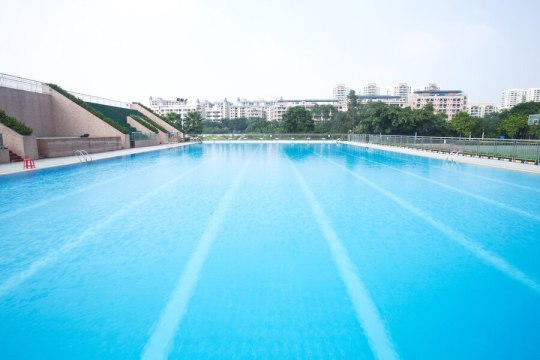
Swimming pools provide a great way to cool off, relax, and enjoy quality time with family and friends. However, maintaining clean and safe pool water is crucial to ensuring a pleasant and healthy swimming experience. In this guide, we’ll cover everything you need to know about pool water, including common concerns, challenges, a step-by-step maintenance guide, a real-life case study, and key takeaways for keeping your pool pristine.
Common Topics About Pool Water
1. Importance of Proper Pool Water Maintenance
Maintaining pool water quality is essential for health and safety. Poorly maintained water can lead to bacteria growth, algae infestations, and skin or eye irritation. Keeping the right chemical balance prevents these issues and extends the life of your pool.
2. The Ideal Chemical Balance in Pool Water
Your pool water should have a balanced pH level, chlorine content, and other necessary chemicals to prevent bacteria and algae growth. The key components include:
pH Level: Should be between 7.2 and 7.8
Chlorine Level: 1-3 ppm (parts per million)
Alkalinity: 80-120 ppm
Calcium Hardness: 200-400 ppm
Cyanuric Acid: 30-50 ppm (for outdoor pools)
3. Common Pool Water Problems
Some of the most frequent issues with pool water include:
Cloudy Water: Caused by improper chemical balance, debris, or dirty filters.
Algae Growth: Green, yellow, or black algae forming due to low chlorine levels.
Strong Chlorine Smell: Often caused by chloramine buildup from insufficient free chlorine.
pH Imbalance: Can lead to eye irritation, scaling, or corrosion.
4. Different Types of Pool Water Treatment
Chlorine Treatment: The most common method for sanitizing pool water.
Saltwater Systems: Converts salt into chlorine for gentler water treatment.
Ozone and UV Systems: Advanced sanitation that reduces chemical dependency.
Challenges of Maintaining Pool Water
1. Weather Conditions
Rain, extreme heat, and wind can impact pool water chemistry by diluting chemicals or introducing contaminants.
2. Heavy Pool Usage
Frequent swimming increases contaminants like sweat, sunscreen, and body oils, affecting water quality.
3. Equipment Malfunction
A broken pump, filter, or chlorinator can result in poor pool water circulation and sanitation.
4. Chemical Storage and Handling
Storing and handling chemicals incorrectly can lead to accidents and improper pool treatment.
Step-by-Step Guide to Maintaining Pool Water
Step 1: Test Your Pool Water Regularly
Use a reliable test kit to check your pool water at least twice a week. Monitor pH, chlorine, alkalinity, and other chemical levels.
Step 2: Adjust Chemical Levels
Based on your test results, add the necessary chemicals to maintain the correct balance. Follow manufacturer guidelines and never mix chemicals directly.
Step 3: Clean Your Pool
Skim debris daily
Brush pool walls and floors weekly
Vacuum to remove settled dirt
Step 4: Run the Filtration System
Operate the pool pump for at least 8-12 hours a day to ensure proper circulation and filtration.
Step 5: Shock Your Pool Weekly
Use a pool water shock treatment to break down contaminants and maintain water clarity.
Step 6: Maintain the Filter
Clean or backwash the filter regularly.
Replace filter cartridges when necessary.
Step 7: Monitor Water Levels
Evaporation and splashing cause water loss. Refill your pool as needed and retest the chemical balance.
Case Study: How One Homeowner Saved Their Pool Water
John, a homeowner with a large backyard pool, struggled with constant algae growth. Despite using chlorine, his pool water remained cloudy and green.
Problem
Algae growth due to low chlorine levels.
pH imbalance leading to ineffective sanitization.
Dirty filter reducing circulation.
Solution
John tested and corrected his pH and chlorine levels.
He cleaned and backwashed the pool filter.
He started using a weekly shock treatment.
Results
Within a week, John’s pool water cleared up, and regular maintenance kept it in perfect condition throughout the summer.
Conclusion
Maintaining pool water may seem challenging, but with a consistent routine, the right chemicals, and proper equipment care, you can keep your pool clean and safe all year long. Whether you’re dealing with cloudy water, algae, or chemical imbalances, following a structured maintenance plan ensures crystal-clear pool water for a refreshing swim every time!
0 notes
Text
The Ultimate Guide to Infinity Pool Builders: Everything You Need to Know
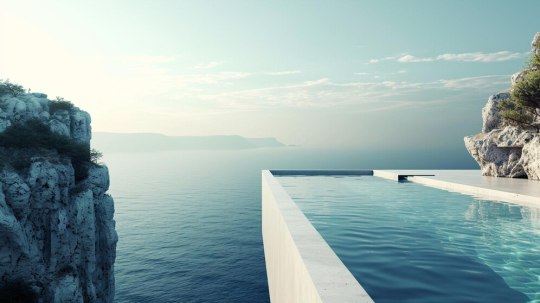
Introduction
Infinity pools are a breathtaking addition to any property, offering a seamless blend between water and sky. These pools, also known as vanishing edge pools, provide a luxurious and modern aesthetic, making them a top choice for homeowners and commercial property owners alike. But how do you go about building one? What challenges might you face? And how do you choose the right infinity pool builders for your project?
This guide covers everything you need to know about infinity pool construction, common topics to consider, potential challenges, a step-by-step building process, a real-world case study, and a conclusion to tie it all together.
Common Topics About Infinity Pools Everyone Should Know
1. What Is an Infinity Pool?
An infinity pool is designed to create an illusion where the water appears to merge with the horizon. This effect is achieved by constructing an edge that allows water to overflow into a catch basin, which then recirculates the water back into the pool.
2. Why Choose an Infinity Pool?
Aesthetic Appeal – These pools offer a stunning, high-end look that enhances any landscape.
Increased Property Value – Homes with infinity pools often have a higher market value.
Serenity & Relaxation – The visual effect of an endless water surface provides a soothing atmosphere.
3. Cost of Building an Infinity Pool
Building an infinity pool is an investment. The cost varies based on factors such as size, design complexity, location, and materials. Generally, infinity pools can range between $50,000 to $150,000 or more.
4. Maintenance Requirements
Since infinity pools have a continuous overflow system, they require additional maintenance compared to standard pools. Regular cleaning of the catch basin, water level adjustments, and pump maintenance are necessary.
Challenges in Building an Infinity Pool
1. Site Selection and Structural Integrity
Not all locations are suitable for an infinity pool. The land should have solid structural integrity to support the pool and prevent shifting or settling.
2. Complex Plumbing System
Infinity pools require a sophisticated hydraulic system to keep the water flowing smoothly over the edges while maintaining the right water levels.
3. Higher Construction Costs
Due to the specialized engineering and additional materials required, building an infinity pool costs more than a traditional pool.
4. Weather and Environmental Conditions
Wind exposure can lead to water loss, while extreme temperatures can impact material durability. Pool builders must consider these factors in the design.
5. Permit and Regulatory Compliance
Infinity pools must meet local building codes and safety regulations, which can add time and cost to the project.
Step-by-Step Guide to Building an Infinity Pool
Step 1: Planning and Design
Consult professional infinity pool builders to discuss your vision and budget.
Choose the pool shape, materials, and features (e.g., lighting, heating, filtration systems).
Conduct a site survey to determine feasibility.
Step 2: Securing Permits
Obtain necessary building permits from local authorities.
Ensure compliance with zoning laws and safety codes.
Step 3: Excavation and Site Preparation
Clear and level the land.
Excavate the area where the pool and the catch basin will be installed.
Step 4: Structural Construction
Lay the foundation and install a strong retaining wall to support the infinity edge.
Construct the pool shell using reinforced concrete or fiberglass.
Step 5: Plumbing and Filtration System Installation
Install the overflow system, filtration pumps, and drainage pipes.
Ensure proper water circulation for a continuous overflow effect.
Step 6: Tiling and Finishing
Apply waterproofing to prevent leaks.
Install tiles or a decorative pool finish for a sleek look.
Step 7: Final Testing and Water Filling
Run multiple tests to check for leaks and ensure the overflow system is functioning correctly.
Fill the pool and balance the water chemistry.
Step 8: Landscaping and Final Touches
Add decking, lighting, and other landscape features.
Conduct a final inspection before use.
Case Study: A Stunning Cliffside Infinity Pool
Client Profile
Location: Sydney, Australia
Property Type: Private Luxury Home
Challenge: Building an infinity pool on a steep, rocky cliff
Project Overview
A homeowner in Sydney wanted an infinity pool that overlooked the ocean, creating a seamless view. However, the steep terrain presented a challenge. Expert infinity pool builders designed a reinforced retaining structure and used high-grade waterproof materials to ensure durability.
Solution Implemented
A custom-built concrete foundation was created to provide stability.
A high-performance filtration system was installed to maintain water clarity.
The pool was finished with glass tiles for a striking reflective effect.
Outcome
The final result was a breathtaking infinity pool that blended seamlessly with the ocean, adding immense value to the property and providing the homeowner with a resort-like experience.
Conclusion
Infinity pools are a perfect blend of luxury, elegance, and functionality. While they come with unique challenges, working with experienced infinity pool builders ensures a smooth and successful project. From planning and design to construction and maintenance, every step matters in creating a stunning, high-quality infinity pool. If you're considering adding one to your property, consult professionals to turn your dream into reality.
Ready to build your dream infinity pool? Start today by contacting expert infinity pool builders who can bring your vision to life!
0 notes
Text
The Ultimate Guide to Spa Builders: Creating Your Dream Spa Experience

indoor retreat or an outdoor haven, hiring professional spa builders ensures the project is executed flawlessly. This comprehensive guide explores the essential topics, challenges, a step-by-step guide, a case study, and a conclusion to help you embark on your spa-building journey with confidence.
Why Choose Professional Spa Builders?
The expertise of spa builders is indispensable when creating a custom spa. They bring:
Technical Knowledge: Expertise in plumbing, electrical systems, and construction.
Design Skills: Ability to integrate the spa seamlessly into your property.
Compliance Assurance: Ensuring your spa adheres to local building codes and safety standards.
Topics Everyone Should Know About Spa Builders
1. Types of Spas: Choosing What Fits Your Needs
Spas come in various types to match diverse needs and preferences. Common options include:
In-ground Spas: Permanent installations with luxurious designs.
Portable Spas: Convenient, budget-friendly, and easy to maintain.
Swim Spas: Combining exercise and relaxation in one unit.
2. Spa Materials and Finishes
Choosing the right materials impacts durability, aesthetics, and maintenance. Popular choices include:
Fiberglass: Lightweight and affordable.
Concrete: Customizable and long-lasting.
Acrylic: Known for its smooth surface and vibrant colors.
3. Energy Efficiency in Spa Design
Modern spa builders prioritize energy efficiency. Look for:
High-quality insulation.
Variable-speed pumps.
Energy-efficient heaters.
Challenges in Spa Building
1. Budget Constraints
Building a spa can be costly, especially when customizing. Working with experienced spa builders ensures accurate cost estimates and adherence to your budget.
2. Space Limitations
Limited space can pose design challenges. Professionals help maximize your area without compromising functionality or aesthetics.
3. Maintenance Concerns
Future maintenance can be daunting. Spa builders can suggest low-maintenance materials and features to make upkeep easier.
4. Regulatory Compliance
Navigating building codes, permits, and safety regulations is complex. Expert builders ensure your spa project complies with all local laws.
Step-by-Step Guide to Building Your Spa
Step 1: Define Your Vision
Begin by envisioning your dream spa. Consider:
Location: Indoor or outdoor?
Size: Small, cozy, or spacious?
Features: Jets, lighting, waterfalls, or smart controls?
Step 2: Set a Budget
Discuss your budget with spa builders to ensure realistic expectations and financial planning.
Step 3: Hire Professional Spa Builders
Research and hire licensed, reputable builders. Check reviews, certifications, and past projects.
Step 4: Design and Planning
Work with builders to finalize the design. They will create a blueprint considering space, materials, and your preferences.
Step 5: Obtain Permits
Builders will handle necessary permits, ensuring compliance with zoning laws and safety standards.
Step 6: Construction Phase
Excavation and foundation preparation.
Plumbing, electrical, and structural installations.
Adding finishing touches like tiling and accessories.
Step 7: Inspection and Final Touches
Ensure the spa passes all inspections. Add furniture, landscaping, or lighting to enhance the area.
Case Study: Transforming a Backyard into a Spa Retreat
Background: A family in Brisbane wanted to transform their unused backyard corner into a relaxing spa retreat.
Challenges:
Limited space.
Strict local regulations.
A tight budget.
Solution: Professional spa builders designed a compact, energy-efficient in-ground spa. The team overcame space limitations by incorporating a multi-level deck for added functionality.
Outcome: The family now enjoys a beautiful spa surrounded by lush landscaping, complete with LED lighting and a waterfall feature.
Conclusion: Building Your Dream Spa with the Right Team
Investing in a spa is an excellent way to enhance your home's value and create a personal sanctuary. Working with experienced spa builders ensures a seamless process, from conception to completion. By understanding the types of spas, tackling potential challenges, and following a systematic approach, you’ll be well-equipped to turn your vision into reality.
Start planning your dream spa today and let the experts make it a stress-free journey!
0 notes
Text
The Essential Guide to Pipeline Monitoring: Everything You Need to Know
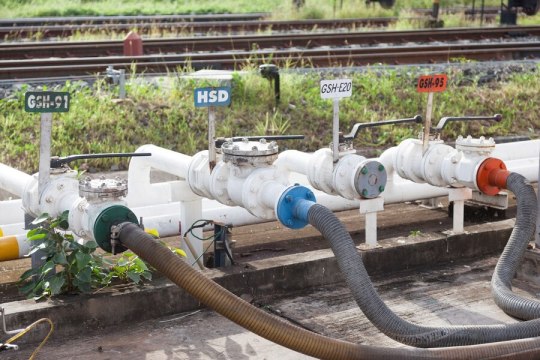
Pipeline monitoring is a critical process in industries like oil, gas, water distribution, and chemical transportation. It ensures safety, operational efficiency, and environmental compliance. This blog post delves into the essentials of pipeline monitoring, including common topics, challenges, a step-by-step guide, a case study, and a conclusion. By the end, you'll have a comprehensive understanding of this crucial practice.
What Is Pipeline Monitoring and Why Is It Important?
Pipeline monitoring refers to the systematic process of tracking the flow, pressure, and integrity of pipelines using advanced technologies. This process helps detect issues such as leaks, corrosion, or blockages early, ensuring seamless operations and preventing costly damages.
Key Benefits of Pipeline Monitoring
Safety Assurance: Prevent accidents caused by leaks or bursts.
Environmental Protection: Avoid spills that could harm ecosystems.
Operational Efficiency: Maintain consistent flow and pressure.
Cost Savings: Reduce repair and cleanup costs through early detection.
Common Topics Related to Pipeline Monitoring
1. Types of Pipeline Monitoring Systems
Pipeline monitoring systems come in various forms, each tailored to specific industry needs:
Supervisory Control and Data Acquisition (SCADA): A central system that monitors real-time data.
Acoustic Monitoring: Detects changes in sound patterns to identify leaks.
Fiber Optic Monitoring: Uses light waves to detect pressure changes and vibrations.
Ultrasonic Testing: Evaluates pipeline integrity using sound waves.
2. Role of IoT in Modern Pipeline Monitoring
The Internet of Things (IoT) has revolutionized pipeline monitoring by enabling real-time data collection and analysis. Sensors installed along the pipeline communicate with central systems, providing instant updates on performance metrics.
3. Regulations and Standards in Pipeline Monitoring
Industries must adhere to strict regulations, such as:
API Standards: Developed by the American Petroleum Institute.
ISO 13623: Guidelines for managing pipeline integrity.
Environmental Protection Regulations: Address potential spills and emissions.
Challenges in Pipeline Monitoring
While pipeline monitoring is essential, it is not without its challenges:
1. Aging Infrastructure
Many pipelines are decades old, making them prone to corrosion and failure. Upgrading and monitoring these systems can be costly and time-consuming.
2. Harsh Environmental Conditions
Pipelines often operate in remote or harsh environments, such as deep-sea locations or deserts. Monitoring systems must withstand extreme conditions.
3. Data Overload
Modern monitoring systems generate massive amounts of data. Processing and analyzing this information in real-time can be overwhelming without advanced analytics tools.
4. Cybersecurity Threats
As monitoring systems become more digital, they become vulnerable to cyberattacks. Protecting these systems requires robust cybersecurity measures.
Step-by-Step Guide to Implementing Pipeline Monitoring
Step 1: Assess Your Needs
Identify the specific requirements of your pipeline, such as the type of material transported, environmental conditions, and budget constraints.
Step 2: Choose the Right Monitoring Technology
Select a system that aligns with your needs. For example:
For leak detection: Acoustic or fiber optic monitoring.
For overall system performance: SCADA or IoT-based systems.
Step 3: Install Monitoring Equipment
Position sensors and devices strategically along the pipeline. Ensure proper calibration for accurate readings.
Step 4: Integrate with Centralized Systems
Link monitoring equipment to a central hub, such as a SCADA system, for real-time data collection and analysis.
Step 5: Train Your Team
Ensure that operators and technicians understand how to use the monitoring systems effectively.
Step 6: Conduct Regular Maintenance
Schedule routine inspections and calibration to keep the system functioning optimally.
Step 7: Analyze and Act on Data
Use analytics tools to identify patterns and potential issues. Address these proactively to prevent disruptions.
Case Study: How Pipeline Monitoring Saved a Major Oil Company Millions
The Problem
An oil company operating a vast pipeline network noticed inconsistencies in flow rates. Without proper monitoring, these issues escalated, resulting in a significant oil spill and millions of dollars in cleanup costs.
The Solution
The company implemented a comprehensive pipeline monitoring system using fiber optic sensors and IoT integration.
Results
Leak detection improved by 90%.
Response time reduced from 48 hours to 2 hours.
The company saved $10 million annually in repair and spill cleanup costs.
This case demonstrates the transformative impact of advanced pipeline monitoring systems.
Conclusion
Pipeline monitoring is a cornerstone of operational efficiency and safety in industries that rely on pipeline networks. By understanding the available technologies, addressing challenges, and following a systematic implementation process, companies can reap the benefits of a well-monitored system.
Embracing pipeline monitoring not only saves costs but also ensures compliance with environmental standards and enhances safety. As the industry evolves, adopting innovative solutions will remain key to staying ahead.
Invest in pipeline monitoring today to safeguard your operations and the environment.
0 notes